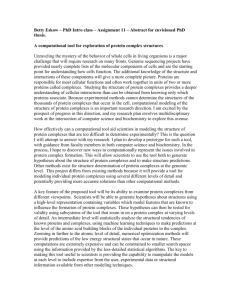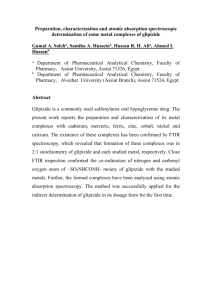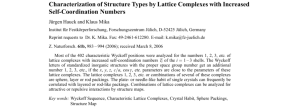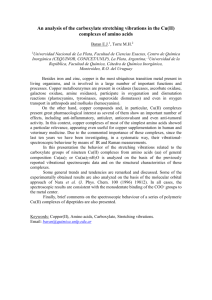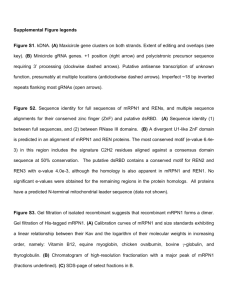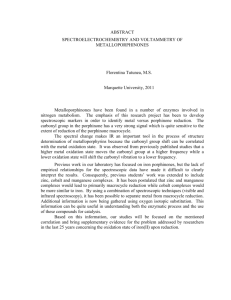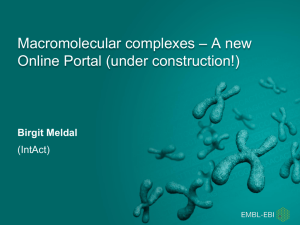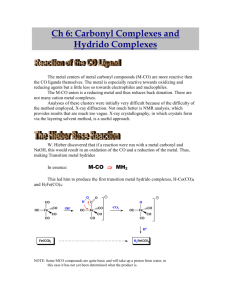Abstract - Plant Stress Physiology
advertisement
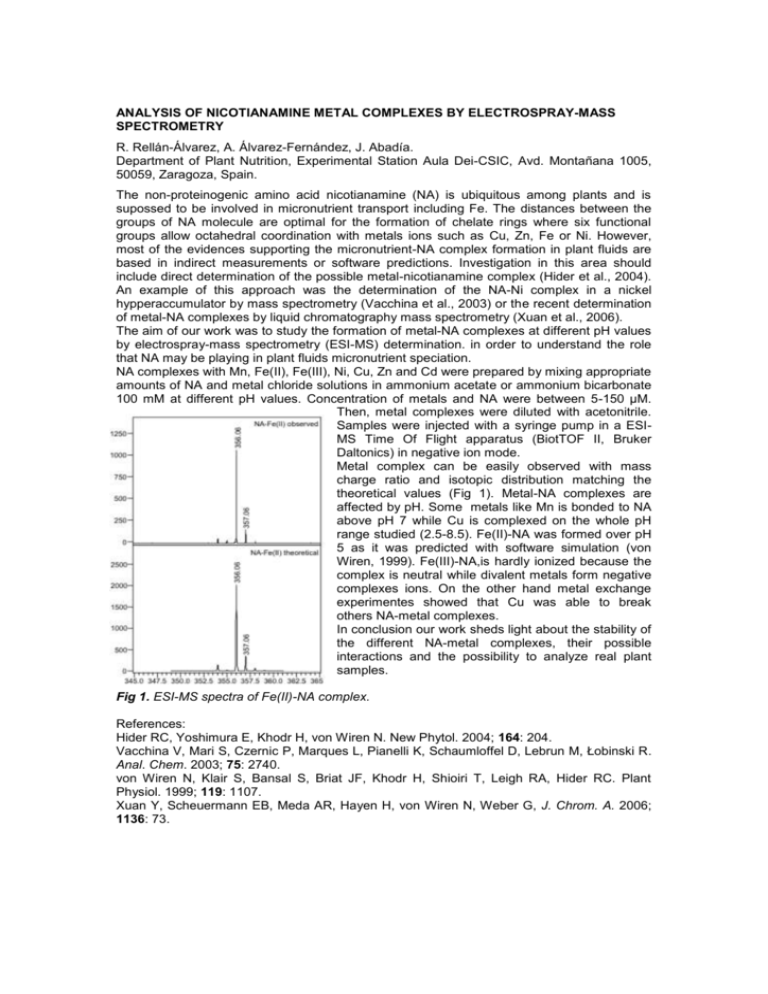
ANALYSIS OF NICOTIANAMINE METAL COMPLEXES BY ELECTROSPRAY-MASS SPECTROMETRY R. Rellán-Álvarez, A. Álvarez-Fernández, J. Abadía. Department of Plant Nutrition, Experimental Station Aula Dei-CSIC, Avd. Montañana 1005, 50059, Zaragoza, Spain. The non-proteinogenic amino acid nicotianamine (NA) is ubiquitous among plants and is supossed to be involved in micronutrient transport including Fe. The distances between the groups of NA molecule are optimal for the formation of chelate rings where six functional groups allow octahedral coordination with metals ions such as Cu, Zn, Fe or Ni. However, most of the evidences supporting the micronutrient-NA complex formation in plant fluids are based in indirect measurements or software predictions. Investigation in this area should include direct determination of the possible metal-nicotianamine complex (Hider et al., 2004). An example of this approach was the determination of the NA-Ni complex in a nickel hypperaccumulator by mass spectrometry (Vacchina et al., 2003) or the recent determination of metal-NA complexes by liquid chromatography mass spectrometry (Xuan et al., 2006). The aim of our work was to study the formation of metal-NA complexes at different pH values by electrospray-mass spectrometry (ESI-MS) determination. in order to understand the role that NA may be playing in plant fluids micronutrient speciation. NA complexes with Mn, Fe(II), Fe(III), Ni, Cu, Zn and Cd were prepared by mixing appropriate amounts of NA and metal chloride solutions in ammonium acetate or ammonium bicarbonate 100 mM at different pH values. Concentration of metals and NA were between 5-150 µM. Then, metal complexes were diluted with acetonitrile. Samples were injected with a syringe pump in a ESIMS Time Of Flight apparatus (BiotTOF II, Bruker Daltonics) in negative ion mode. Metal complex can be easily observed with mass charge ratio and isotopic distribution matching the theoretical values (Fig 1). Metal-NA complexes are affected by pH. Some metals like Mn is bonded to NA above pH 7 while Cu is complexed on the whole pH range studied (2.5-8.5). Fe(II)-NA was formed over pH 5 as it was predicted with software simulation (von Wiren, 1999). Fe(III)-NA,is hardly ionized because the complex is neutral while divalent metals form negative complexes ions. On the other hand metal exchange experimentes showed that Cu was able to break others NA-metal complexes. In conclusion our work sheds light about the stability of the different NA-metal complexes, their possible interactions and the possibility to analyze real plant samples. Fig 1. ESI-MS spectra of Fe(II)-NA complex. References: Hider RC, Yoshimura E, Khodr H, von Wiren N. New Phytol. 2004; 164: 204. Vacchina V, Mari S, Czernic P, Marques L, Pianelli K, Schaumloffel D, Lebrun M, Łobinski R. Anal. Chem. 2003; 75: 2740. von Wiren N, Klair S, Bansal S, Briat JF, Khodr H, Shioiri T, Leigh RA, Hider RC. Plant Physiol. 1999; 119: 1107. Xuan Y, Scheuermann EB, Meda AR, Hayen H, von Wiren N, Weber G, J. Chrom. A. 2006; 1136: 73.



